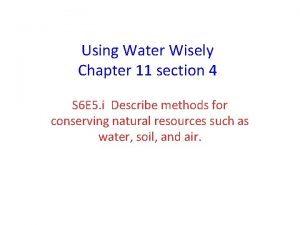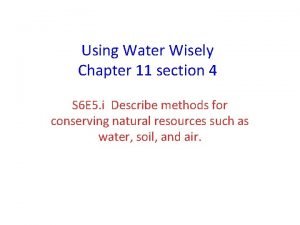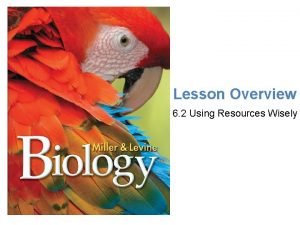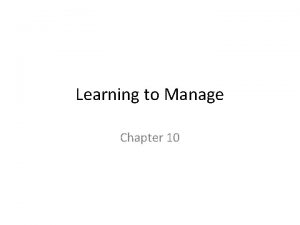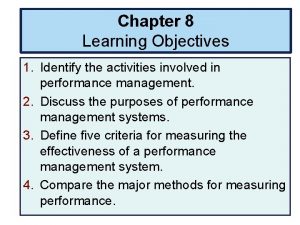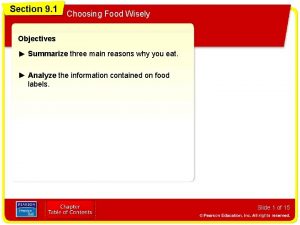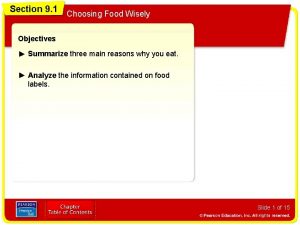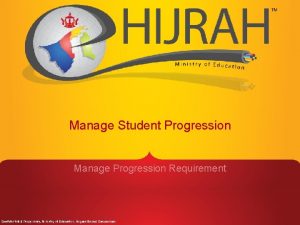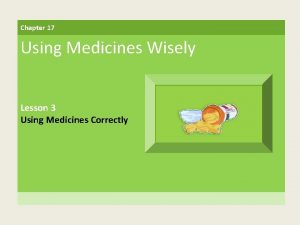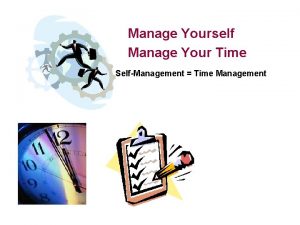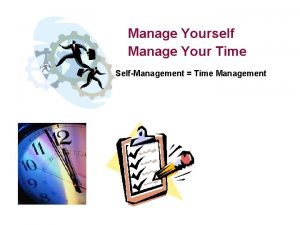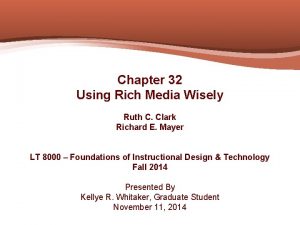Learning to Manage Chapter 10 Management Wisely using














- Slides: 14

Learning to Manage Chapter 10

Management • Wisely using means to achieve goals – (means are called resources)

Resources • Time, objects, services or abilities.

The Management Process • Following a series of steps – 1. Identify your goals. – 2. Recognize your personal priorities and standards. – 3. Determine your resources. – 4. Form a plan. – 5. Implement the plan. – 6. Evaluate the results.

Goal • An aim a person is consciously trying to reach.

Non-human Resources • Include time, money, possessions, and community resources – Community resources-parks, schools, libraries, and other facilities that are shared by many people

Human Resources • Come from within people – They include: skills, knowledge, talents, energy, and people themselves.

Resources Human Nonhuman Abilities Appliances Communication Car Creativity Clothing Dedication Fire & police protection Enthusiasm Food Flexibility Housing Interests Libraries Knowledge Money Optimism Parks People Schools Skills Time Talents

Time Management • The ability to plan and use time well. – Really about self-management • By managing time, you accomplish more of what you want to do.

Managing Time Wisely • Use time management aids – Planners – Calendars – Computer scheduling – Organizers

Steps in Time Management I. Planning 1. 2. 3. 4. Get organized Consider goals and personal priorities Make to-do lists Create a weekly plan (map each day on paper so you can see how each hour is filled or open)

II. Implementing the Plan 1. to carry out a plan 2. remembering your standards 3. be creative III. Evaluation the plan -this may be as simple as noting whether or not the plan worked (the plan is only a guide).

• Using Time Management Strategies – Steer clear of time wasters (phone calls, tv, etc. ) – Avoid procrastination – Combine tasks whenever possible (whenever you combine or fit tasks together, you dovetail them) – Break tasks into smaller steps (helps when you can cross off tasks on your list to see each step complete) – Compensate for lost time – Be prepared to use spare time (book or project to do while waiting for an appt. )

• Everyone has 24 hours each day. • To accomplish all the tasks that become a part of a busy schedule means managing yourself first. • Then you can use your time to pursue your priorities.
 Chapter 11 section 4 using water wisely answer key
Chapter 11 section 4 using water wisely answer key Using water wisely
Using water wisely Overuse
Overuse Wisely using resources to achieve goals is known as
Wisely using resources to achieve goals is known as 4.3 using studies wisely
4.3 using studies wisely Chapter 8 learning to manage
Chapter 8 learning to manage Choosing foods wisely quiz
Choosing foods wisely quiz Choosing food wisely
Choosing food wisely Blank verse othello
Blank verse othello Your words have power use them wisely
Your words have power use them wisely Choosing wisely geriatrics
Choosing wisely geriatrics Janet wisely
Janet wisely As i walk this wicked world
As i walk this wicked world Wisely definition
Wisely definition Multiagent learning using a variable learning rate
Multiagent learning using a variable learning rate
